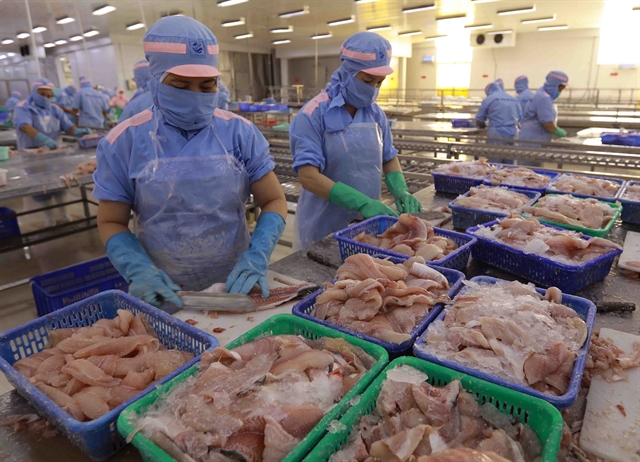Institute outlines three scenarios for VN's agricultural growth amid potential US reciprocal tariffs
Total export turnover of agricultural, forestry and fishery products in Q1 reached US$15.7 billion, up 13.1 per cent year-on-year.

HÀ NỘI — The Ministry of Agriculture and Environment’s Institute of Strategy and Policy on Natural Resources and Environment (ISPONRE) has released three growth scenarios outlining the potential impact on Việt Nam’s agricultural sector in 2025, as the US delays the imposition of a 46 per cent reciprocal tax on Vietnamese imports.
In the first scenario, if the current 10 per cent tariff rate is maintained consistently across all trading partners throughout 2025, Việt Nam’s agricultural exports and the sector’s annual growth target are forecast to remain largely unaffected.
In case the US and Việt Nam reach an agreement on a moderate 20 per cent tax rate, after the deferral period following the second scenario, export turnover is projected to drop by around 20 per cent in the second half of the year. This would cause the sector’s annual growth to decline by 0.15 to 0.2 percentage points, reducing it to between 3.8 and 3.85 per cent.
Under the third scenario, if the US enforces the full 46 per cent tariff, Vietnamese agricultural exports could fall by 40 per cent in the latter half of 2025. This scenario would likely cut sector growth by 0.3 to 0.4 percentage points, reducing overall growth to 3.6-3.8 per cent.
According to the institute, strengthening dialogue with the US is crucial to mitigating the impact of potential tariff hikes on Vietnamese agricultural exports. It urges both countries to work towards reducing import taxes on each other’s goods or establishing tax exemption mechanisms for key strategic agricultural products. These efforts should be supported by enhanced transparency in product origin to meet international trade standards.
In light of the possible imposition of a 46 per cent reciprocal tax by the US, ISPONRE stresses the need for urgent support measures targeting heavily impacted products. While such measures may be temporary, they must be swift and effective to help businesses and producers adapt to the changing trade landscape.
Immediate support options include reducing import taxes on essential input materials, deferring payments of value-added tax (VAT), corporate income tax and personal income tax for households involved in agricultural, forestry and fishery production and trade. Additionally, credit interest rate support should be provided to affected businesses and individuals.
Beyond short-term relief, the institute emphasises the importance of long-term competitiveness. This includes boosting productivity, enhancing product quality, and reducing costs through science, technology and innovation.
Moreover, continuous monitoring and strict compliance with US market standards and regulations are essential to maintaining export momentum and securing market access, according to the institute.
Additionally, it highlights the importance of market diversification as a long-term solution to mitigate risks posed by shifting global trade dynamics.
While maintaining a strong presence in traditional markets such as China, East Asia, ASEAN, the US and the EU, Việt Nam is encouraged to expand its reach into underexploited and emerging markets. These include the BRIC nations (Brazil, Russia and India), Latin America and major African economies.
Furthermore, ISPONRE advocates tapping into new consumer segments, such as Halal food markets, which offer significant growth potential.

In line with Resolution No 25/NQ-CP, dated February 5, 2025, which sets an ambitious national growth target of 8 per cent or more for the year, Việt Nam’s agriculture, forestry and fishery sector has reported a robust performance in the first quarter of 2025.
The sector is striving to achieve an annual value-added growth rate between 4 per cent and 4.2 per cent, with agriculture targeted at 3.85 per cent, forestry at 5.47 per cent and fisheries at 4.35 per cent.
According to the Ministry of Agriculture and Environment, the sector was allocated a Q1 growth target of 3.7 per cent, and in actual performance, it slightly surpassed expectations, achieving a GDP growth rate of 3.74 per cent. This figure marks the highest first-quarter growth in the past four years, contributing 6.09 per cent to the overall value-added growth of the national economy.
Additionally, total export turnover of agricultural, forestry and fishery products in Q1 reached US$15.72 billion, a 13.1 per cent increase compared to the same period in 2024. — VNS





